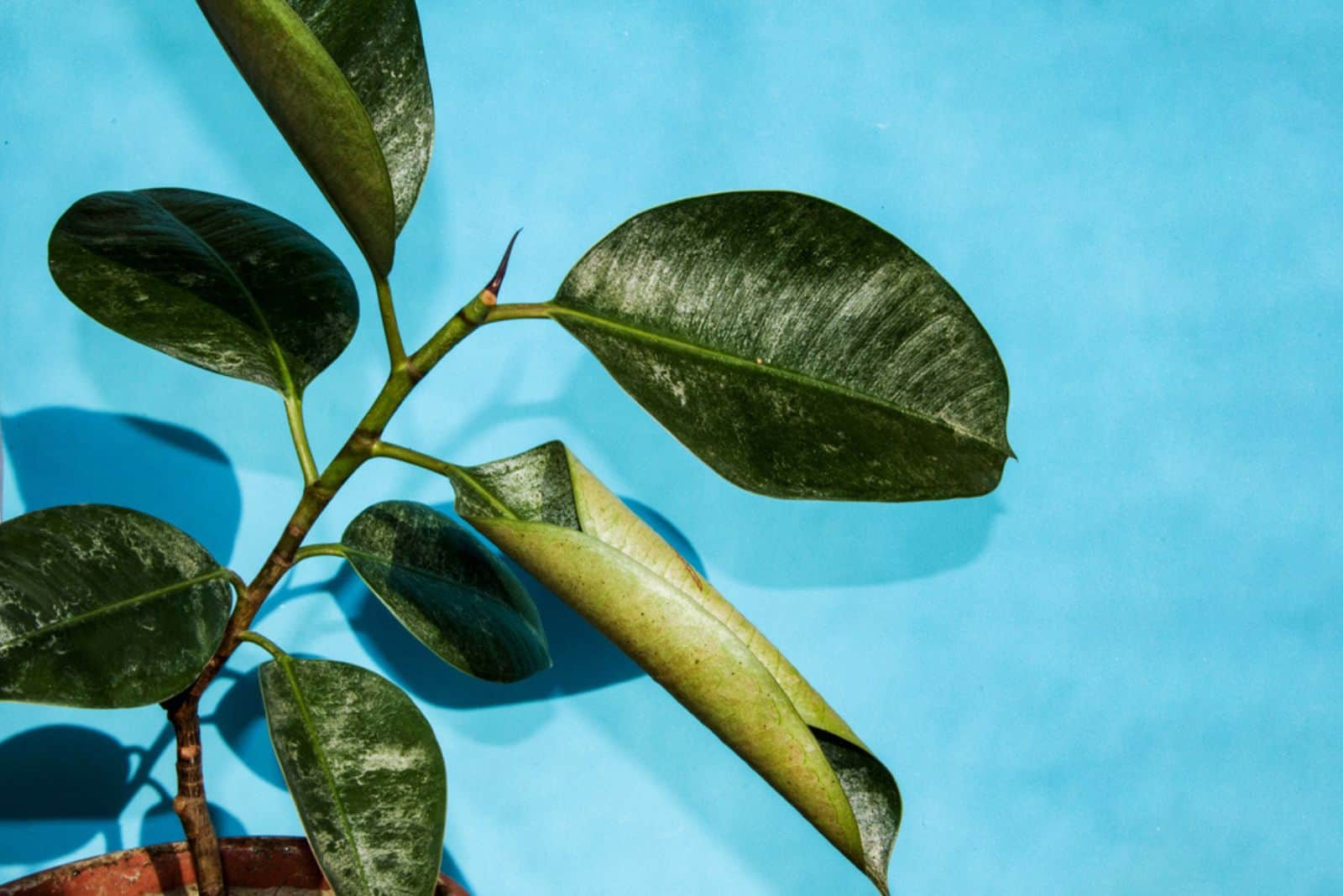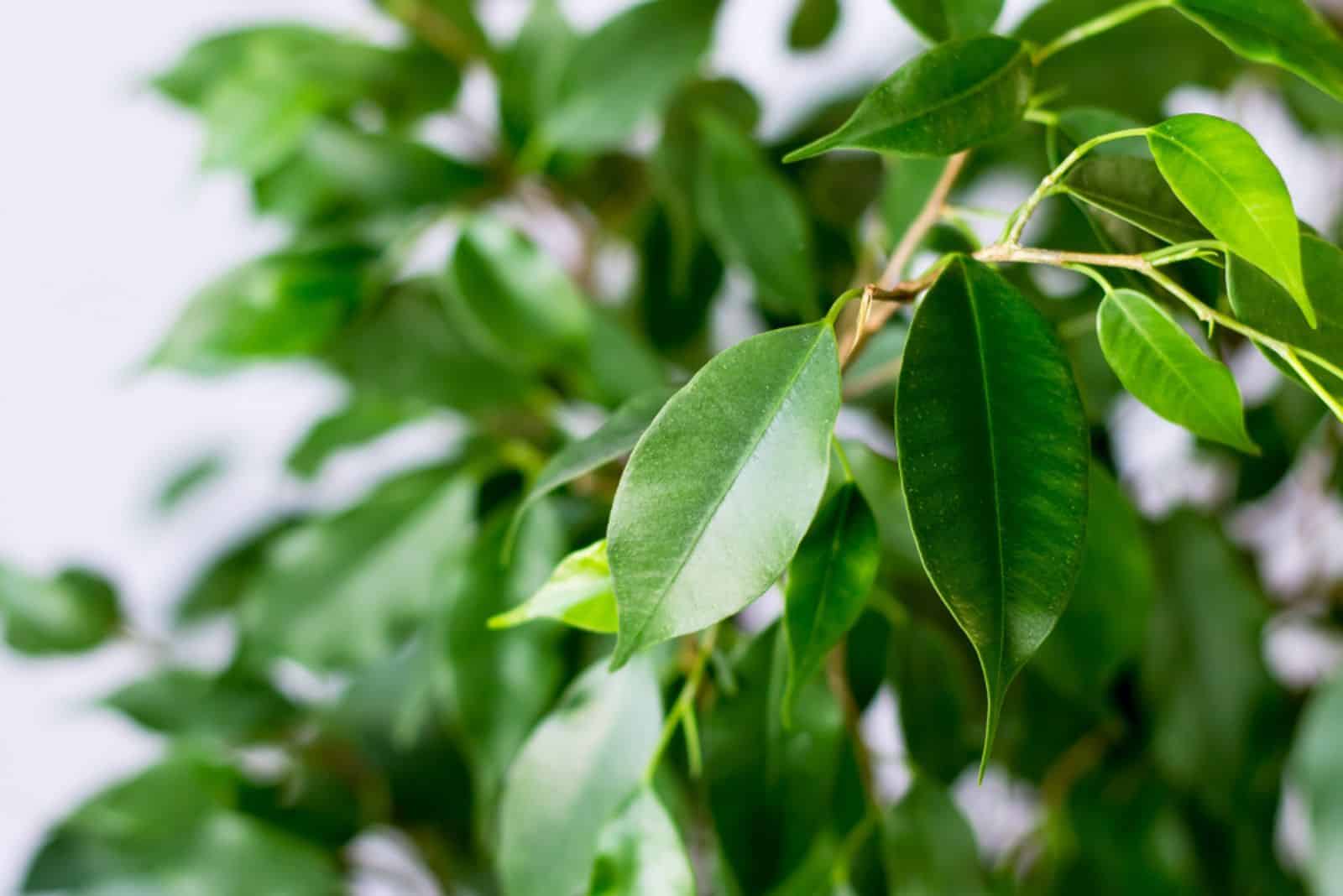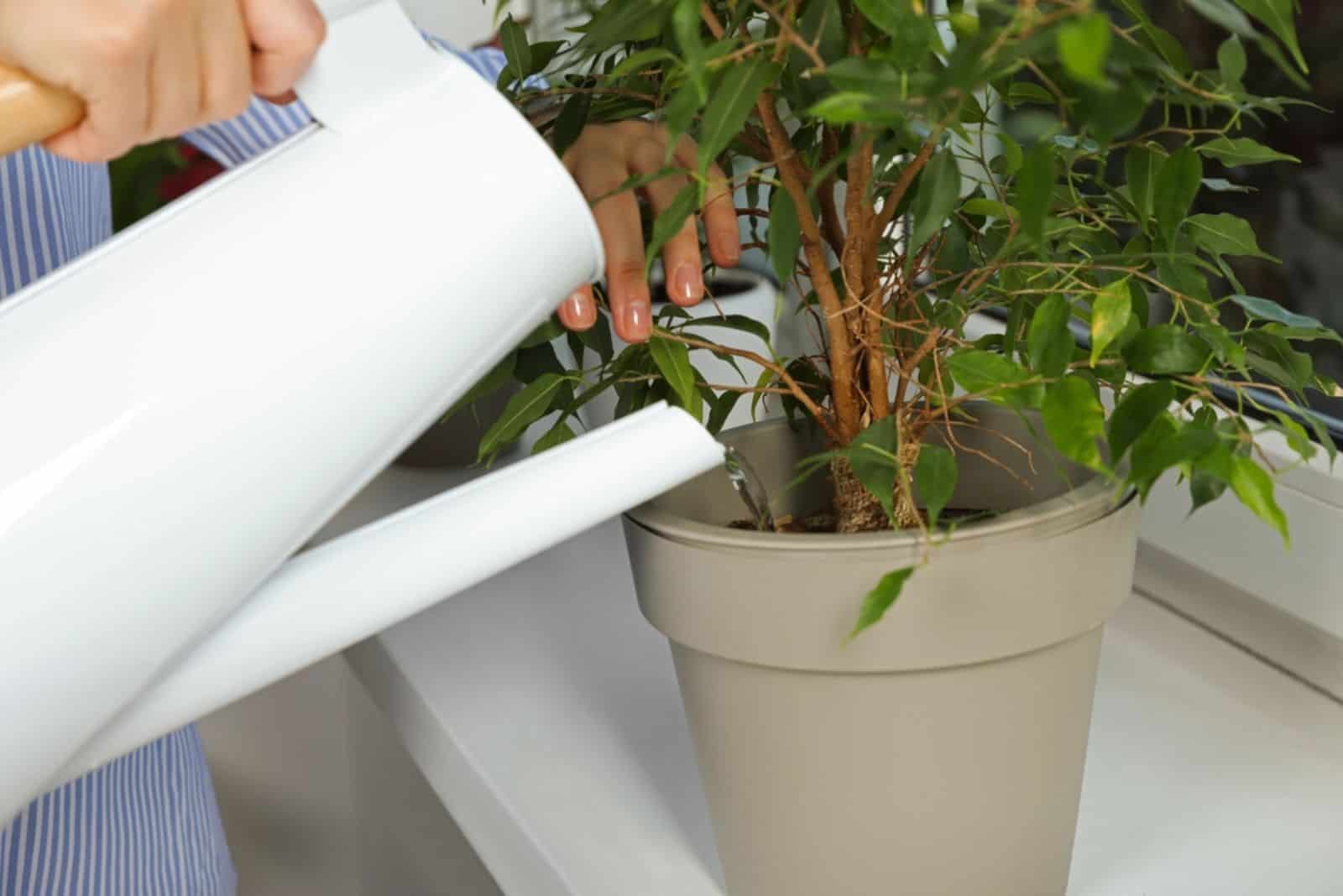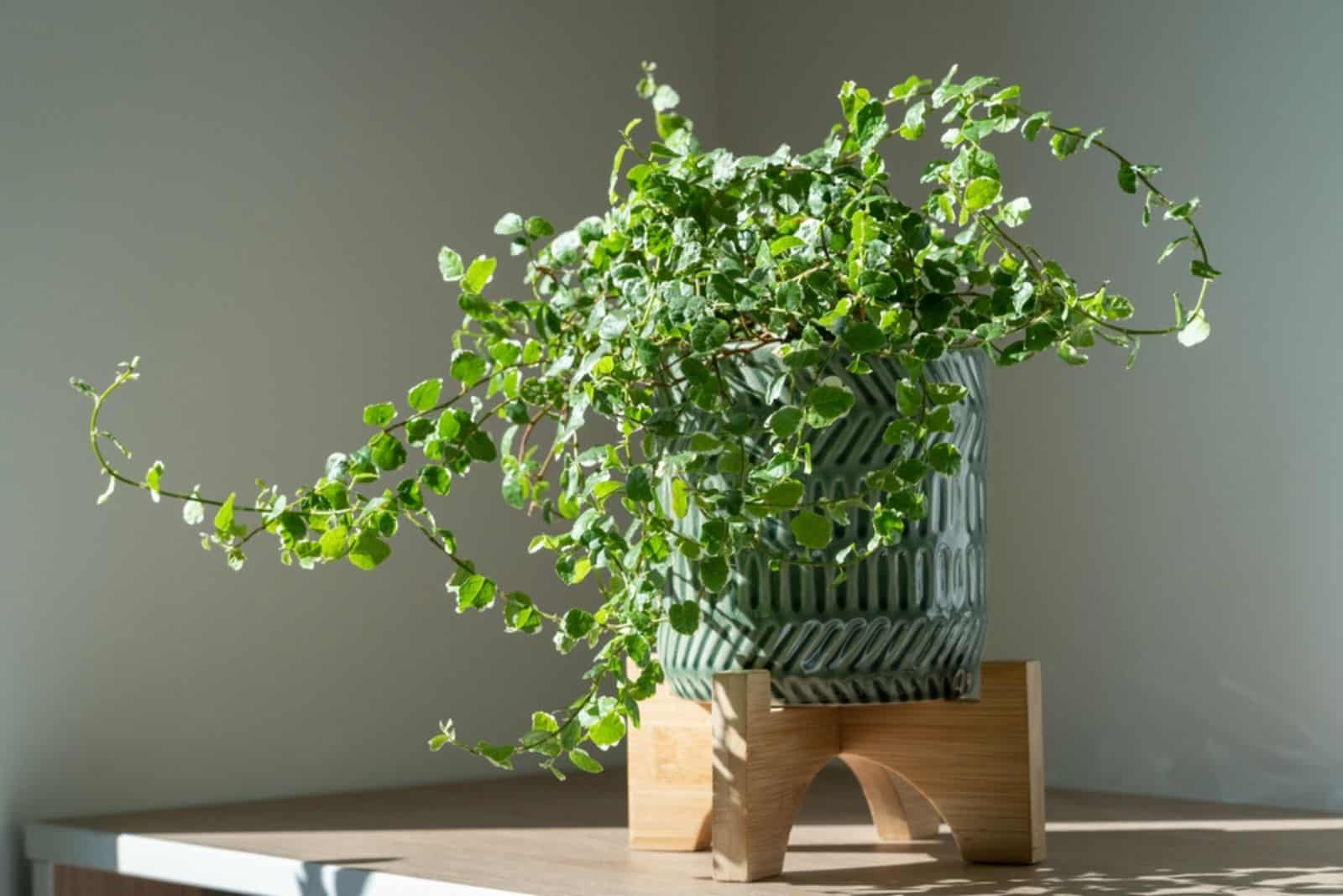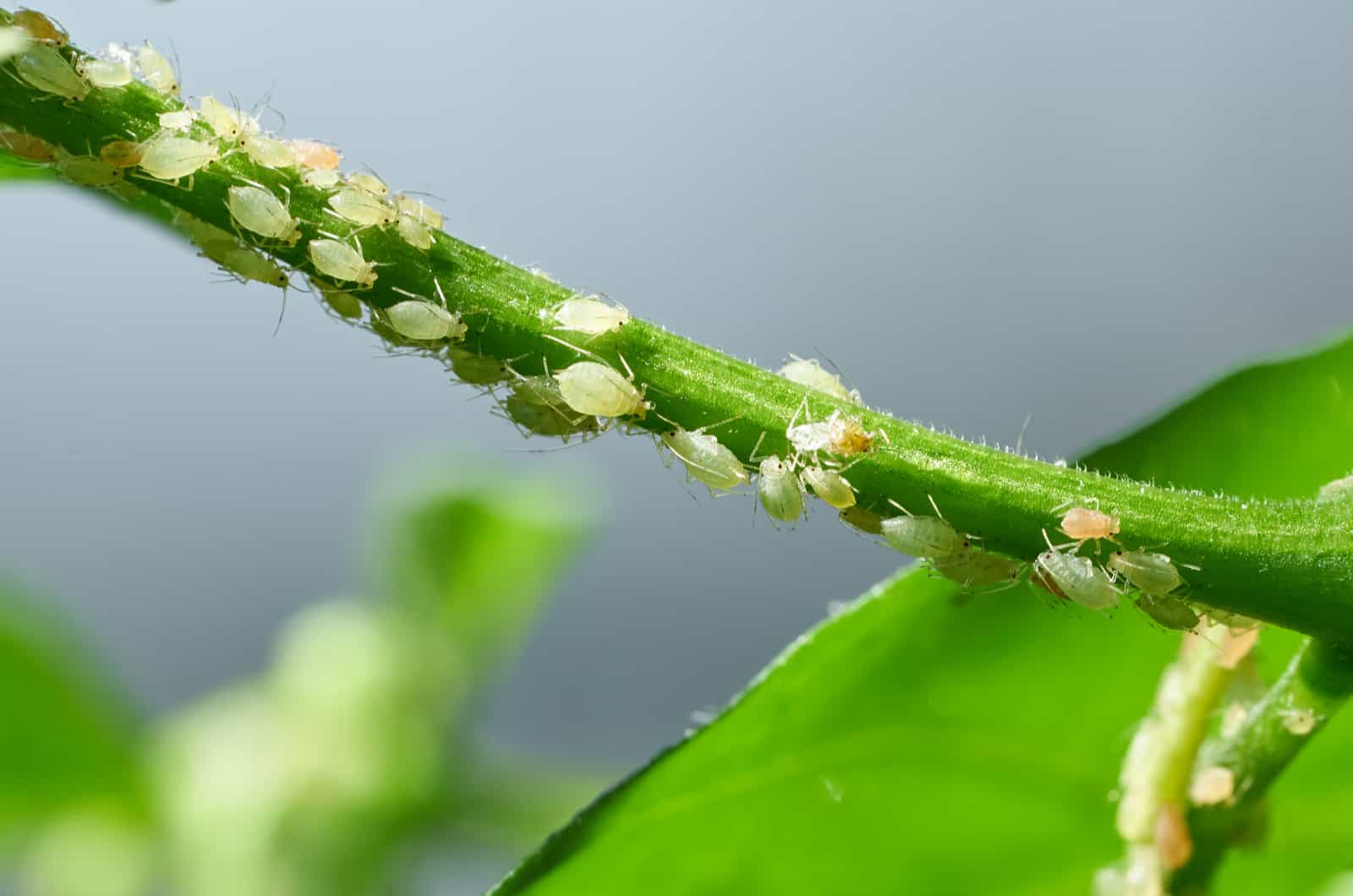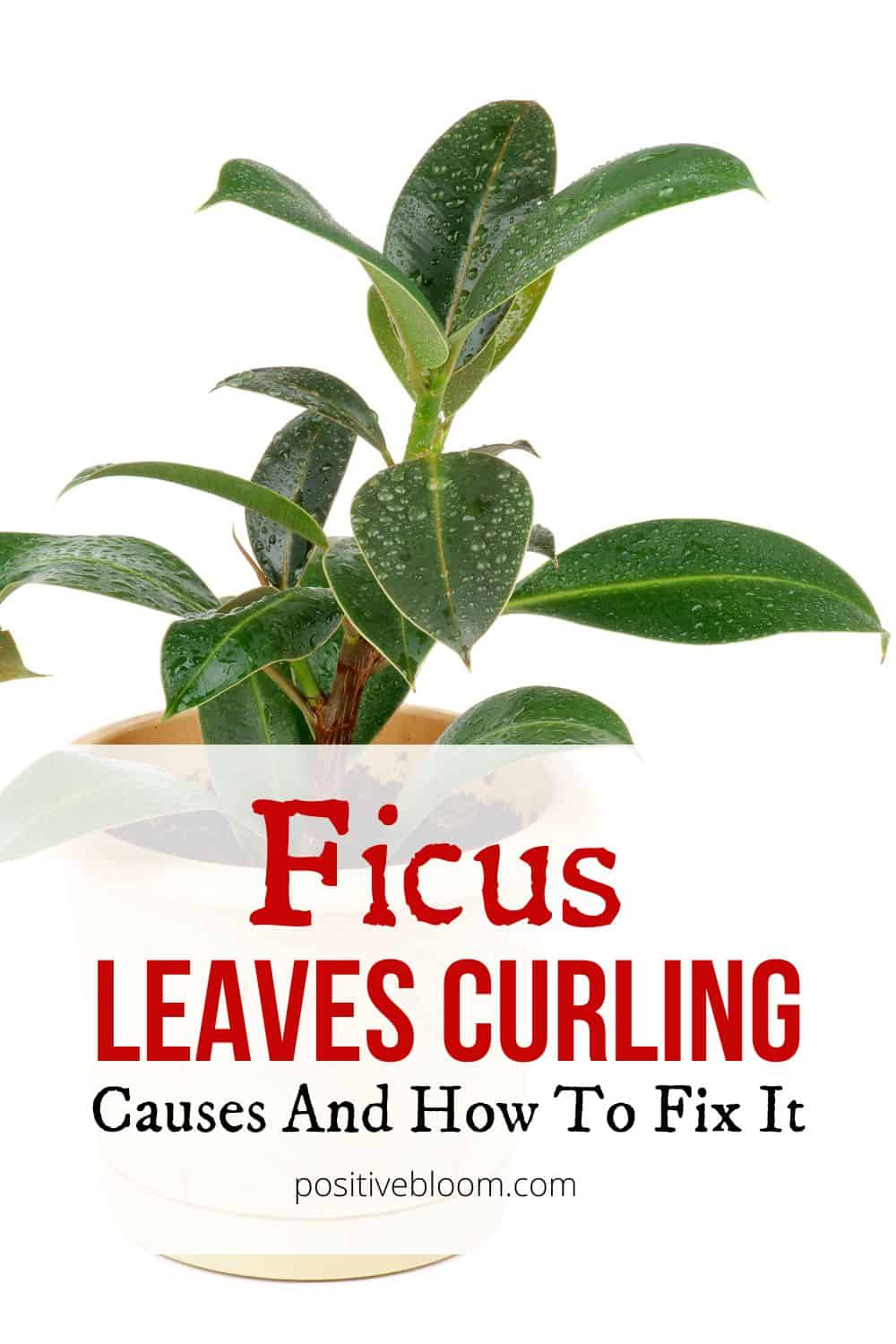Ficus plants have been grown as houseplants for a very long time, and although the care requirements of these plants are low, ficuses aren’t completely problem-free.
If your ficus leaves curling, and you can’t determine the cause, don’t worry because I have made a list of all the possible causes of curling leaves, as well as how to fix whatever the issue might be.
Luckily, your ficus plant has a great chance for recovery, especially if you react as soon as you spot the curling.
Let’s get started!
Ficus Leaves Curling: Causes & Solutions
All ficus plants can suffer from leaf curl. For example, curling is a common fiddle leaf fig problem.
To fix this leaf issue, you need to know what’s causing it. The most common reasons for ficus leaves curling are underwatering, overwatering, low humidity, cold temperatures, direct sunlight, transplant shock, pest infestation, and nutrient deficiency.
Let’s get into details!
Underwatering
If your ficus elastica leaves display curling, you first need to check if it’s underwatered because this is the most common reason for curling.
This can happen if you forget to water your plant, especially during the hot summer. Other reasons may be improper conditions that increase the water evaporation rate.
If your ficus is lacking water, you’ll also notice dry soil, wilting, and brown leaves.
Solution To Underwatering
Your rubber tree plant needs a good soak. You’ll need to water it frequently until you notice that the soil is moist enough and your plant doesn’t have a droopy appearance.
Pay attention to watering after your plant recovers; don’t wait until the soil dries out entirely to do so again.
Rubber Plant Leaves Curling Due To Overwatering
Another common cause is also related to improper watering. Overwatering will happen if you keep watering your plant when the soil is already moist.
Just like underwatering, overwatering can be caused by improper conditions, but ones that decrease the water evaporation rate.
This is a serious issue and will lead to root rot, which can be fatal for your rubber plant. The leaves will wilt, droop, and turn yellow, and your plant will stop growing if root rot occurs.
Learn how the root rot disease affects ficus lyrata (fiddle leaf fig plant) here.
Solution To Overwatering
You’ll need to postpone watering your rubber plant until the soil has dried out. But, never expose your overwatered plant to direct sun to dry out faster as this will do even more damage.
Pay attention to the potting mix; you need well-draining soil, so add perlite or orchid bark to the soil, and make sure the container has drainage holes.
Remember that your rubber plant needs less water during winter as it enters dormancy.
If your plant has root rot, you’ll need to repot it and remove the diseased roots.
Low Humidity
Another common reason for curling leaves is low humidity. Dry air will cause the leaves of your rubber plant to lose moisture faster, so they’ll curl to prevent further moisture loss.
You’ll also notice that the leaf tips and edges become crispy and turn brown. Your houseplant will also display stunted growth and drooping if it grows in low humidity.
Solution To Low Humidity
These houseplants prefer high humidity, so you’ll need to increase it to at least 50%. Mist your ficus elastica, place a pebble tray below the container, or use a humidifier (you can buy one on Amazon).
You can also move it to a kitchen or bathroom, or create a microclimate by grouping all your indoor plants together.
Too Warm Or Too Cold Temperatures
Extreme temperatures, both low and high, can cause the leaves to curl. In the case of high temperature, the water will evaporate faster, which means the leaves will lose moisture and eventually curl.
Cold temperatures may also cause curling. The plant is trying to protect itself and prepare for frost (if you don’t increase temperatures).
You’ll also notice yellow leaves or the plant wilting and drooping.
Solution To Temperature Issues
You’ll need to keep nighttime temperatures between 60 to 65°F and daytime temperatures between 75 to 80°F.
Avoid cold drafts, heating devices, and air conditioners.
Direct Sunlight
Contrary to popular belief, tropical plants don’t like the direct sun. It causes the leaves to curl as well as other issues like sunburn and leaf scorch. The Ficus elastica is a plant that grows well in low light, so exposing it to direct sun isn’t the best idea.
If you have a variegated rubber tree, it may lose its variegations due to excess sun.
Direct sunlight also affects the soil moisture content; potting soil loses moisture faster if the plant receives too much sun.
Solution To Direct Sunlight
It would be best if you moved your rubber plant somewhere it can get enough light. The ideal place would be in bright indirect light.
If the light level is lower, don’t worry, the plant will grow just fine. Still, if you notice changes in growth rate or leaf structure and color, consider increasing the light level.
Transplant Shock
Transplanting and repotting are an essential part of ficus elastica plant care. This is how to refresh the potting soil and ensure there’s more space for your plant to grow. It’s also one of the ways to make your rubber plant bushy.
However, plants may suffer from shock after transplanting or repotting and need some time to adapt. You may also notice drooping, leaf drop, and wilting, and your plant may even die.
Propagation may also result in the leaves of the mother plant curling.
Don’t panic immediately; new leaves may curl, and it’s perfectly normal for the plant as it’s a sign of new growth! Give it some time, and if the curling doesn’t stop, check other conditions.
Solution To Transplant Shock
Cut off any severely affected leaves, and don’t prune the plant until it recovers. Ensure proper humidity, light, and temperature, and water when the top two inches of the soil dry out.Water your rubber plant using room temperature water.
Pest Infestation
If you notice curling, you should also inspect the leaves and check if there are any pests. Spider mites, mealybugs, thrips, aphids, and scale insects may all pay a visit to your ficus elastica. The leaves will only curl, wilt, or droop if the infestation is severe.
Fungus gnats, especially larvae, are most likely to cause curling followed by wilting and yellowing.
Pests leave brown, black, or yellow spots and webbing, and a severe infestation will cause leaf drop, wilting, and drooping.
Solution To Pest Infestation
Luckily, there are many efficient ways to control pests during flowering. First, isolate your ficus to prevent them spreading. Dip a cotton swab in neem oil and rub the leaves. You can also use insecticidal soap and chemical insecticides in the case of severe infestation.
You can get rid of fungus gnats by using one of the methods above or installing fly traps.
Nutrient Deficiency
If your rubber plant lacks magnesium or phosphorus, it will display leaf curl. You may also notice leaf discoloration and drooping.
Underfertilization and overfertilization rarely cause curling, but check the nutrients just in case.
Solution To Nutrient Deficiency
When feeding your rubber plant, use a balanced, all-purpose fertilizer and apply it twice a month during the growing season.
Wrapping Up
Just like other houseplants, the ficus elastica isn’t completely problem free, although it does have low care requirements.
Now you know why your ficus leaves curling, so you can determine the cause and fix the problem by using our advice.
Until next time!
Like this post? Share or pin it for later!

